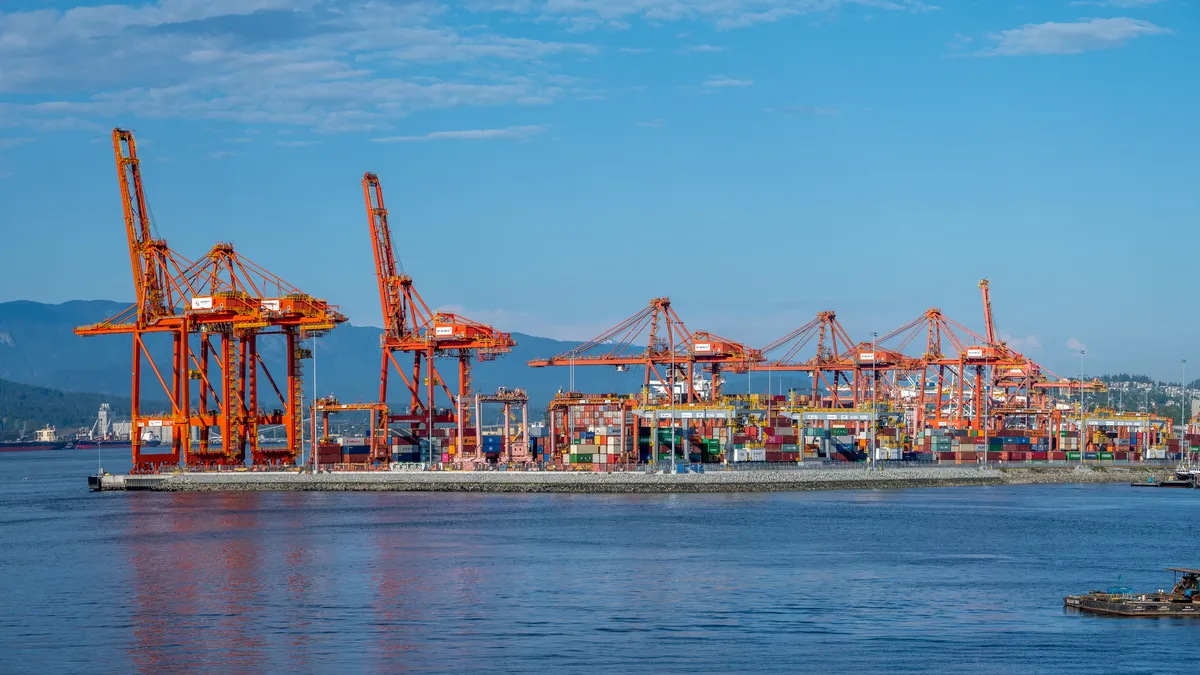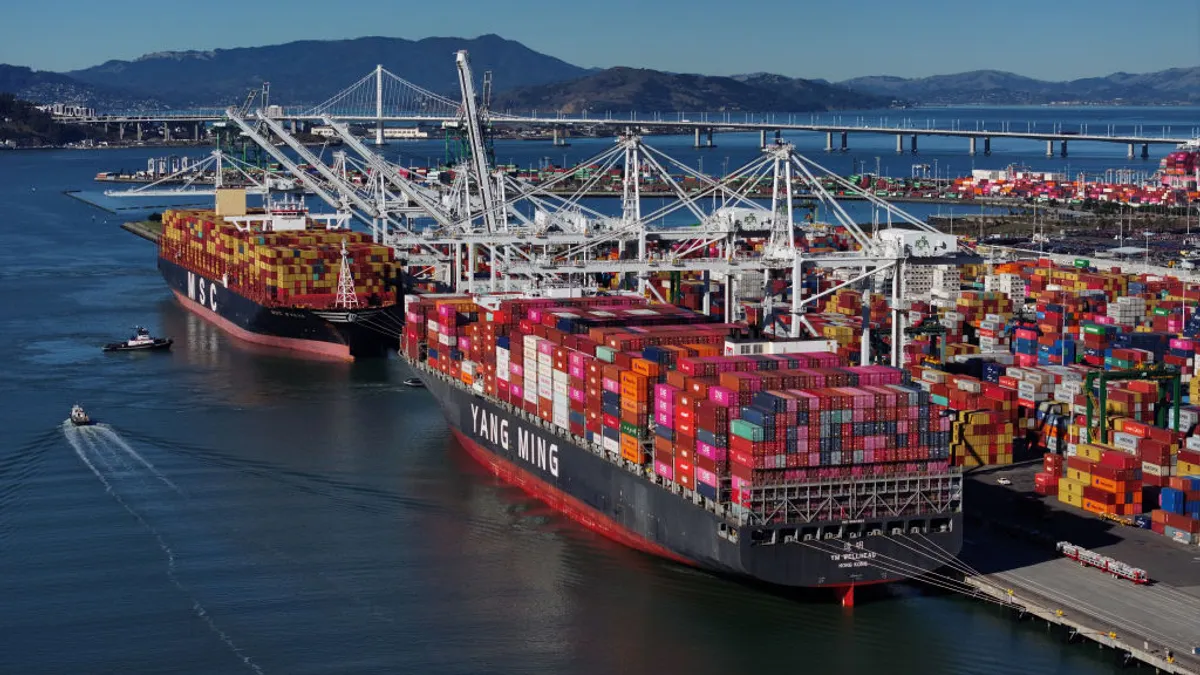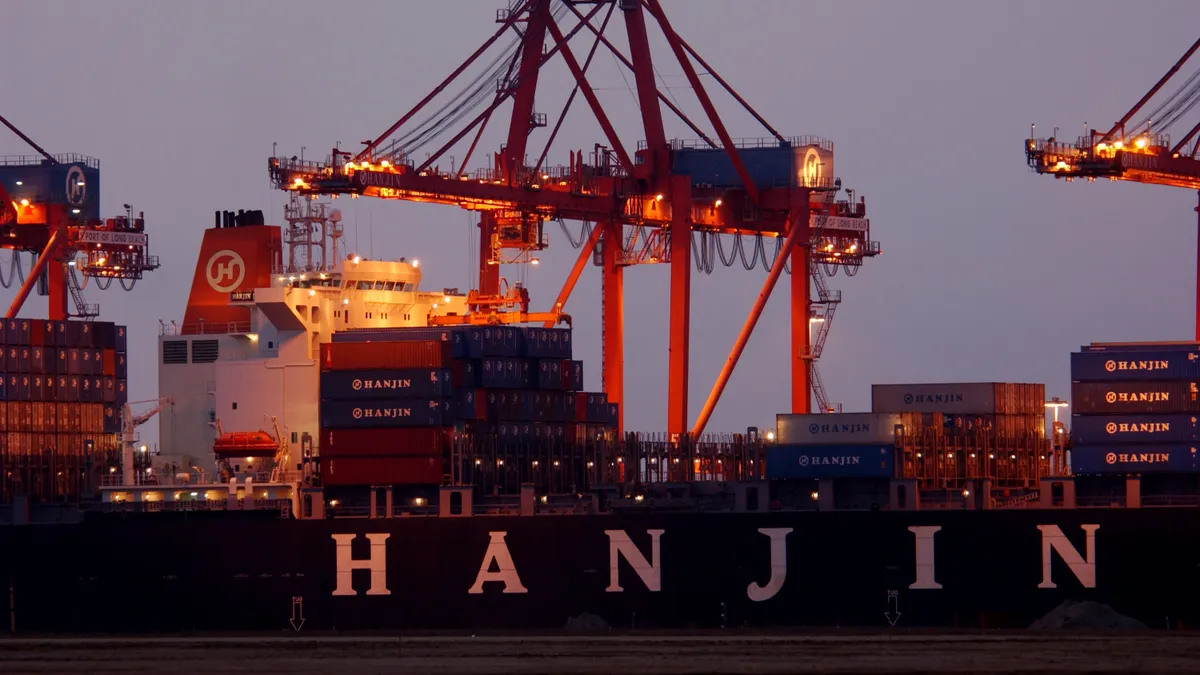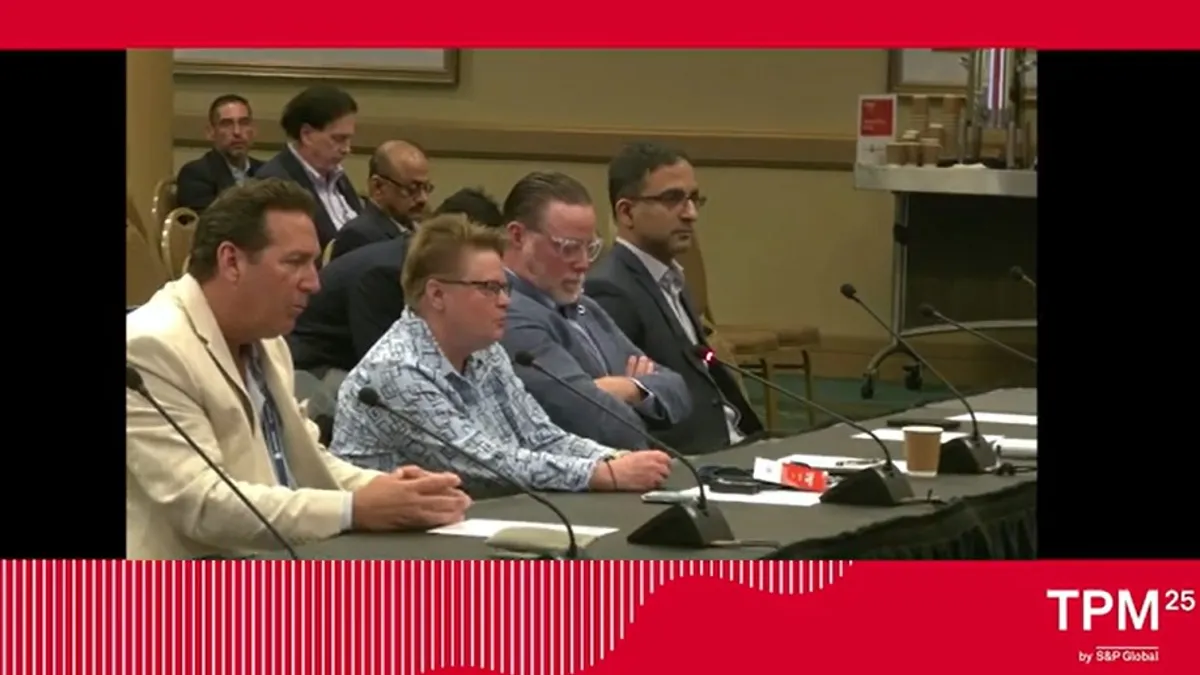The British Columbia Maritime Employers Association locked out more than 700 members of the International Longshore and Warehouse Union Local 514 on Nov. 4 after union workers staged a walkout at BCMEA member terminals.
The two sides met separately with the Federal Mediation and Conciliation Service on Nov. 9, but no progress was made, according to an email from the BCMEA sent to Supply Chain Dive. No additional meetings were scheduled
Both parties have been in negotiations for nearly two years after the expiration of their contract on March 31, 2023. Most recently, the BCMEA presented ILWU Local 514 with its final offer on Oct. 30. The proposal includes a 19.2% salary increase over the next four years and an average $21,000 signing bonus.
While experts told Supply Chain Dive they expect minimal short-term impact on supply chains from the work stoppage — as imports from Vancouver can be re-routed to U.S. West Coast ports — a lengthier shutdown could prove damaging.
“If the work stoppage lasts for several weeks and more volume is diverted, we would expect equipment-availability issues impacting spot prices and some delays,” said Marc Iampieri, global co-leader of the logistics and transportation practice at AlixPartners.
State of operations
As of Nov. 6, there have been no changes to the coast-wide job action involving the ILWU Local 514 and BCMEA, according to the Port of Vancouver. The port remains open despite the disruptions at BCMEA member terminals. Impacted terminals include those in the automotive, breakbulk and container sectors.
All grain shipments and operations at the Westshore coal terminal are not affected by the lockout, according to the update, and most petroleum products are still on the move. In terms of rail, embargoes are in place, and the port advises shippers to contact railways directly for the most up-to-date information.
The Port of Prince Rupert is also experiencing disruptions, according to a Nov. 5 operational update, with two out of seven terminals being directly impacted. A port spokesperson told Supply Chain Dive that the Fairview Container Terminal, which focuses on intermodal containers, and the Westview Container Terminal, which handles wood pellets, cannot conduct business due to the stoppage.
In a Nov. 8 update, the Port of Prince Rupert detailed the various operational effects of the stoppage. At least one vessel's berthing has been delayed, and container vessel discharge has ground to a stop. Rail movements have also been impacted, averaging 12 trains per day since the labor disruption took effect. In the week leading up to the disruption, the Port of Prince Rupert averaged 14 trains per day.
On Nov. 2, Canadian Minister of Labour and Seniors Steven MacKinnon said on X that while federal mediators are onsite, it is the “responsibility of the parties to reach an agreement.”
Broader impacts
The Vancouver and Prince Rupert ports are some of the busiest in Canada. For context, the Port of Vancouver moved nearly the same amount of cargo as the country’s next five largest ports combined in 2023, Pina Melchionna, president and CEO of CITT – Canada’s Logistics Association, told Supply Chain Dive.
Canada’s western ports are also the largest exporters of potash, the trade name for potassium used for fertilizer, with a shutdown costing the industry $9.7 million per day in lost revenue, Melchionna added.
Products like coal and containerized freight, including crops and meats, may also be impacted, according to Ron Scalzo, senior managing director at FTI Consulting.
There could be a disruption to the flow of import products like footwear, apparel, auto parts, chemicals and lumber as well, Scalzo said. He further noted that Vancouver is a “critical” point of entry for perishable cargo like produce, seafood and dairy.
“My advice is to always accurately value your risk to supply shortages and the cost to mitigate them, and then to invest in having multiple options available when issues arise."

Marc Iampieri
Global co-leader of the logistics and transportation practice at AlixPartners
Vancouver’s exports, including agricultural, energy and industrial commodities, won’t be too heavily impacted if the stoppage is quickly resolved, according to Iampieri. Grain exports are also safe due to Canada’s labor code.
To avoid severe disruptions, experts said shippers will likely shift volumes to U.S. West Coast ports like the Port of Los Angeles and the Port of Seattle.
However, the North American supply chain is still recovering from the recent strike on the U.S. East and Gulf Coast ports, meaning any diverted volumes may prompt more backlog and longer dwell times at West Coast ports, Melchionna said.
Mitigation measures
With the holiday season fast approaching, having a contingency plan is critical to navigating the current port disruption, according to experts.
“My advice is to always accurately value your risk to supply shortages and the cost to mitigate them, and then to invest in having multiple options available when issues arise,” Iampieri said. “The better way to manage your supply chain is to invest in alternate/secondary suppliers, routings, and some ‘no-regrets’ inventory and to always be on the lookout for risks to make subtle adjustments to the plan.”
“The more you know the more options and lifelines you have when things come to a halt."

Pina Melchionna
President and CEO of CITT – Canada’s Logistics Association
Besides having a diversified supply base and multiple routings for key trade lanes, disruptions can also be averted through supplier, customer and freight forwarder coordination, according to Iampieri. He noted that using alternate routes is the easiest short-term mitigation plan, but pulling some purchases forward can allow for more supply on hand.
Shippers should also have a “strong sounding board” of carriers, warehouse operators and other industry experts, Melchionna said. She also expects shippers to consider backup storage options to house completed products and materials that can’t move due to potential backlogs.
“The more you know the more options and lifelines you have when things come to a halt,” she said.
Editor's note: This story was updated to provide the result of Saturday's meetings with the FMCS, and a Port of Prince Rupert operational update.





















